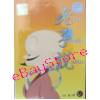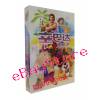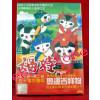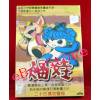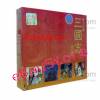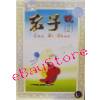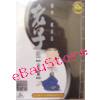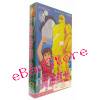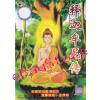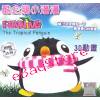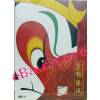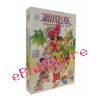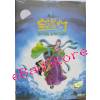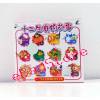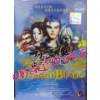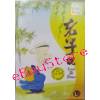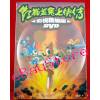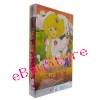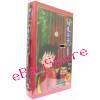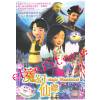
China Anime
| Price : | |
| Weight : | 250 g |
| Genre : | Others , |
| Subtitle : | Chinese , English , |
| Language : | Cantonese , |
| Video Format : | NTSC , |
| Discs : | 1 |
| Region Code : | ALL , |
| Model : | DVD , |
Lotus Lantern
The story is based on the traditional Chinese folklore about a boy named Chenxiang. His mother, Sanshengmu, was a goddess and his father, Liu Yanchang, was a mortal. Since their marriage was forbidden, his maternal uncle, Erlang Shen, who was a god, punishes them by killing Liu Yanchang. Sanshengmu escapes and gives birth, but Chenxiang grows up without knowledge of his ancestry. Sanshengmu possesses a magical Lotus Lantern whose light can scare away evil. When Erlang Shen, a strict and powerful god, kidnaps Chenxiang, Sanshengmu fights to save him.
Unfortunately, Erlang Shen is victorious and Chenxiang is forced to live in his palace on the sacred mountains. Erlang Shen then imprisons Sanshengmu beneath a mountain for her crimes. Although he is quite young, Chenxiang manages to escape from the palace, taking the magical lotus lantern that Sanshengmu lost during the battle.
After surviving adventures with many beloved characters of Chinese mythology, Chenxiang finally matures into a courageous boy who must battle Erlang Shen to win Sanshengmu's freedom and fall in love at the same time.
My Life as McDull
McDull is not the brightest kid on the block, but he continually tries to do his best and please his mother. Although it seems that he may not be destined for great things in life as his mother wishes, McDull never gives up.
The story focuses on several tales about McDull and his childhood. This is told as a narrative reflection of a now adult McDull. These tales muddle up in imaginative uses of Cantonese and heaps of local Hong Kong culture. From tales about a turkey dinner to dreams of following in Lee Lai-shan's footsteps, McDull faces ebbs and flows with his demanding but devoted mother.
There is a significant amount of material in the movie which is culturally relevant to Hong Kong. For example, a large proportion of the humour and appeal of the movie arises from its complex wordplay and subtle hints of Hong Kong's historical legacy and dynamic.
The songs featured in the film are bright and beguiling, and are not overbearing as some musical animations are likely to become. The film's animation is trouble-free and colourful changing at times as stories alter, but echoing the fashion of the innovative artwork. It uses a number of contemporary Computer Graphics animations in several scenes to illustrate an urban Hong Kong, but it skillfully shows Hong Kong as the dirty conurbation it is rather than the high-pitched clean cityscape that many travel advertisements like to portray.
The genial and timid piglet McDull has cheered up the lives of kids, professors, housewives and CEOs, because he epitomises the uncontainable and happy-go-lucky spirit of Hong Kong. His no-holds-barred porcobiography is a frame-by-frame account of life growing up in the slums of Shamshuipo, set against the colourful campaign of a post-97 Hong Kong trudging along regardless of downturn woes. Pouncing shots of busy Kowloon streets, slimy cafés, plus sights and smells of local flavour fused with animation, live object shooting and 3-D computer graphics define the film.



